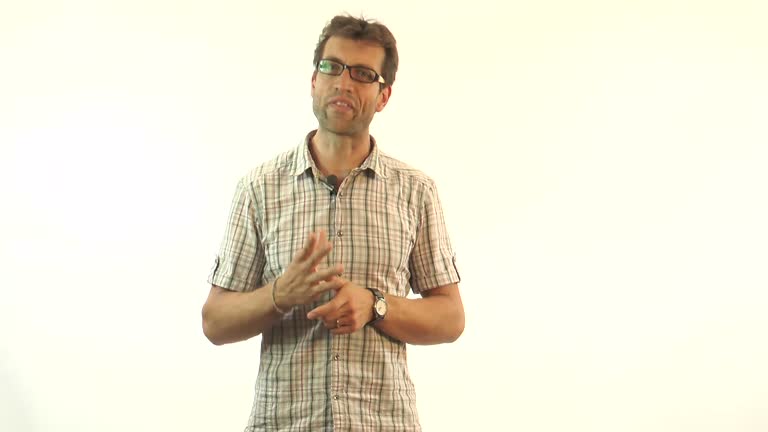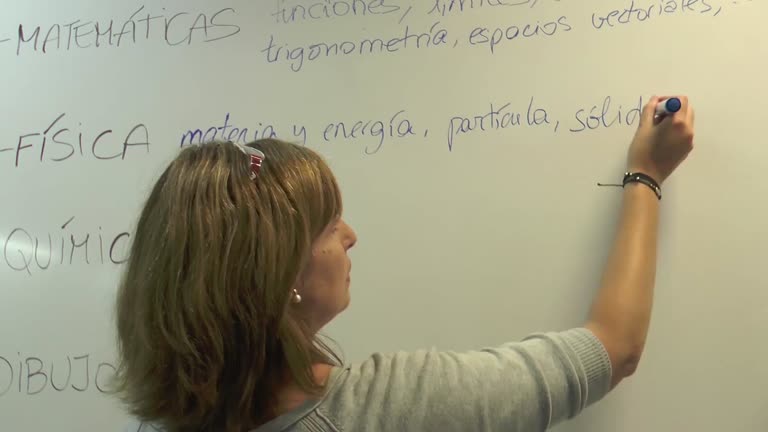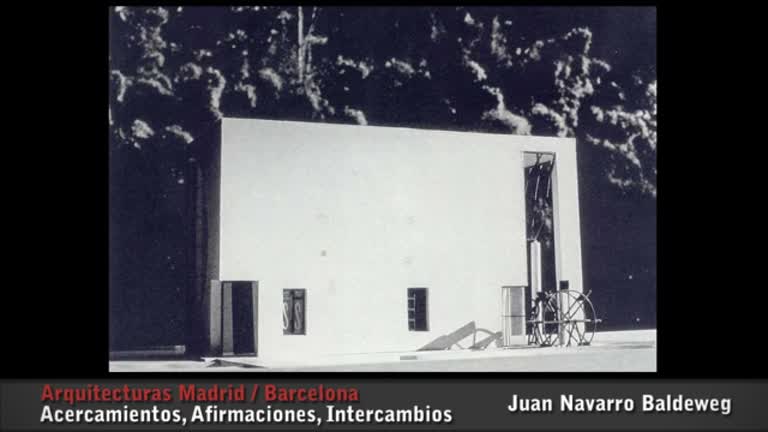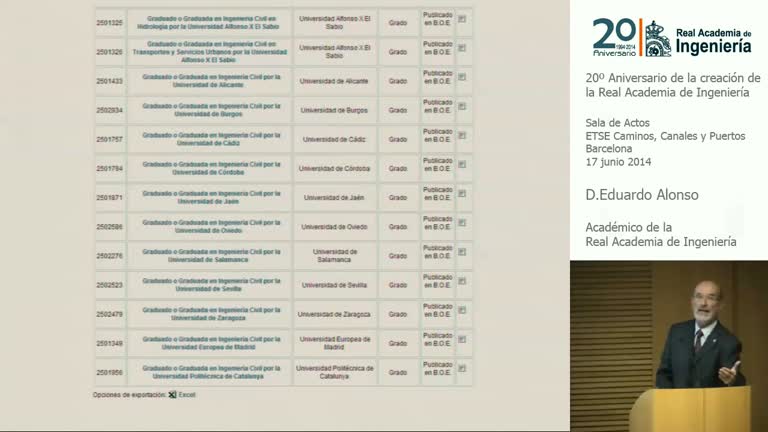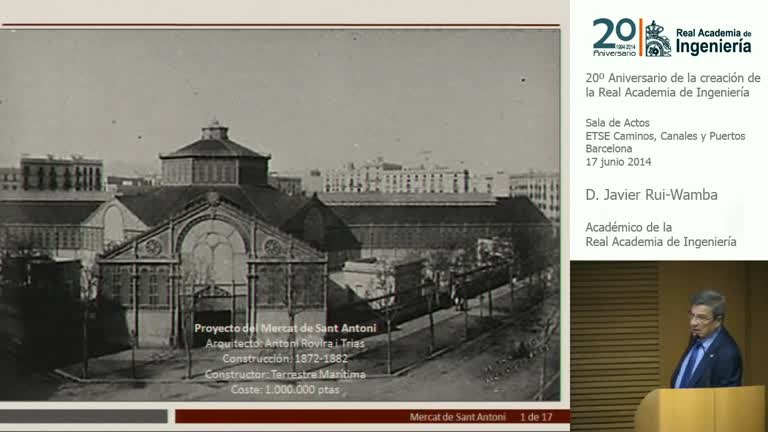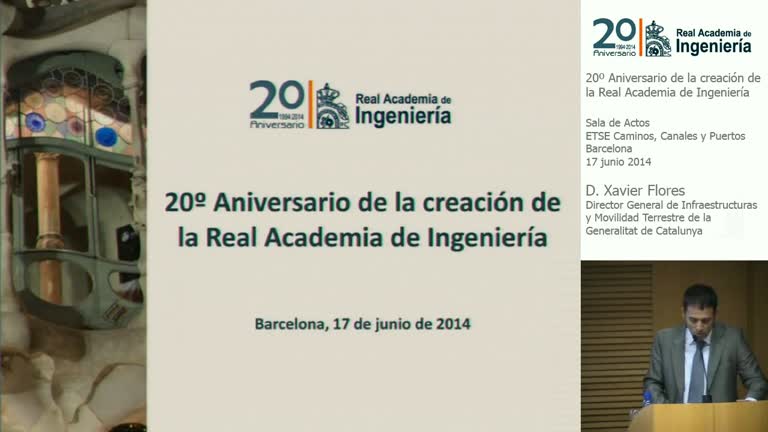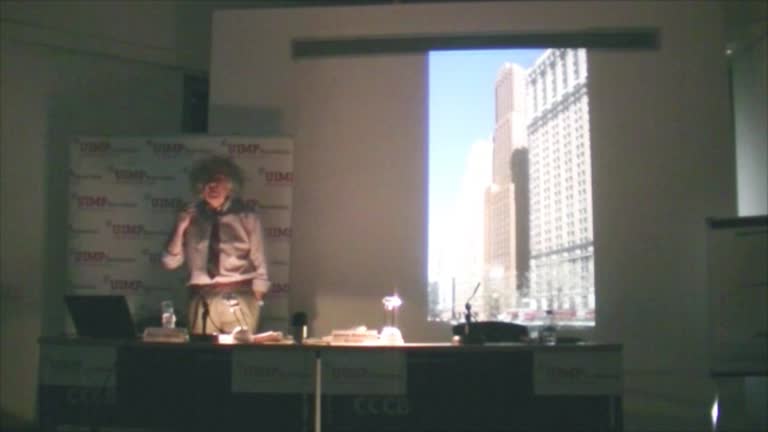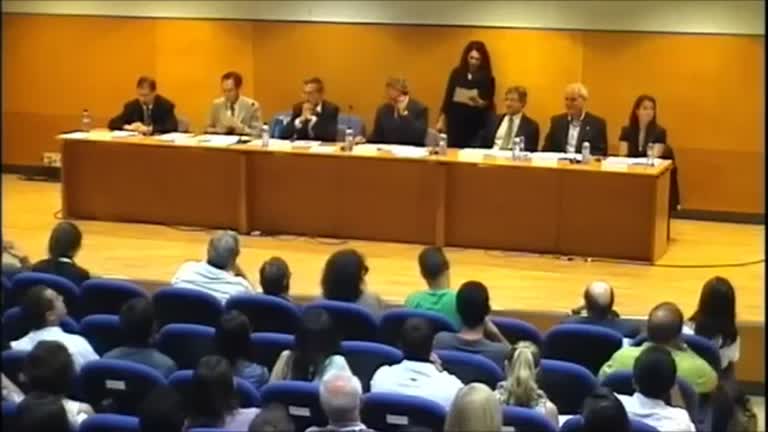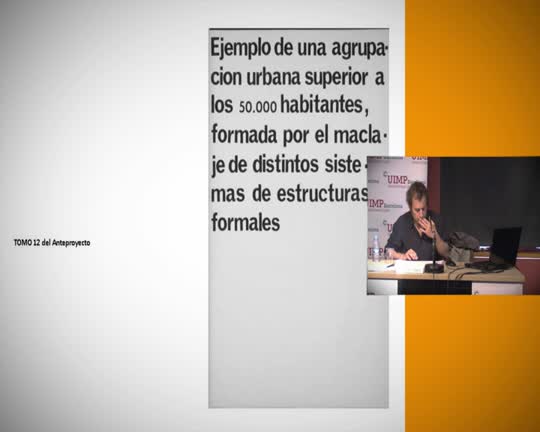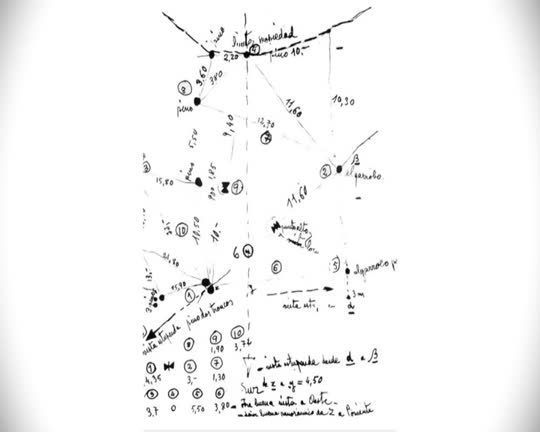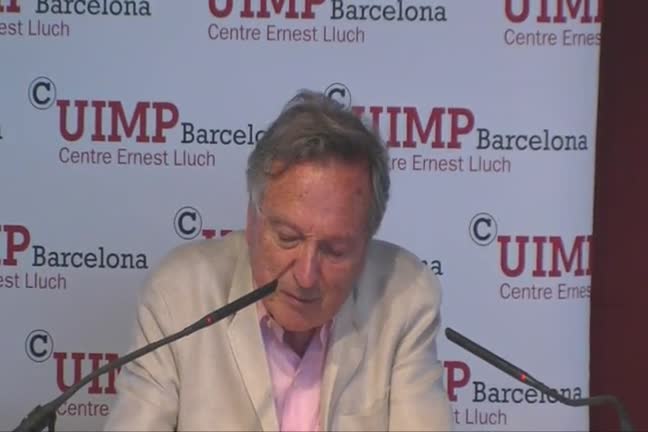Objectes multimèdia amb l’etiqueta: Centres docents
Resultats de la cerca
Ús de les TIC per crear i compartir coneixement en l'àmbit de les ciències de la salut
Accés obert
4 de jul. 2014
Presentació del curs MOOCSalut.
El lenguaje en la ingeniería
Accés obert
4 de jul. 2014
Presentació del MOOC "El lenguaje en la ingeniería".
Hydrodynamic test of a floating offshore structure for wind turbines
Accés obert
30 de juny 2014
"Hydrodynamic test at UPC wave flume of a scaled model of a monolithic floating concrete offshore platform for wind turbines. AFOSP Project KIC-InnoEnergy (EIT) "
20º Aniversario de la creación de la Real Academia de Ingeniería
Accés obert
18 de juny 2014
Conferencia: Ingeniería y Universidad en 2014
D. Eduardo Alonso, Académico de la Real Academia de Ingeniería
Barcelona, 17 de Junio, 2014
D. Eduardo Alonso, Académico de la Real Academia de Ingeniería
Barcelona, 17 de Junio, 2014
20º Aniversario de la creación de la Real Academia de Ingeniería
Accés obert
18 de juny 2014
Conferencia: Breve relato de la milenaria historia de Barcelona que pone de manifiesto la importancia de sus infraestructuras en la evolución de la ciudad.
D. Javier Rui-Wamba, Académico de la Real Academia de Ingeniería
Barcelona, 17 de junio de 2014
D. Javier Rui-Wamba, Académico de la Real Academia de Ingeniería
Barcelona, 17 de junio de 2014
20º Aniversario de la creación de la Real Academia de Ingeniería
Accés obert
18 de juny 2014
Conferencia
D. Xavier Flores, Director General de Infraestructuras y Movilidad Terrestre de la Generalitat de Catalunya
Barcelona, 17 de junio de 2014
D. Xavier Flores, Director General de Infraestructuras y Movilidad Terrestre de la Generalitat de Catalunya
Barcelona, 17 de junio de 2014
BBVA, Francisco Javier Sáenz de Oíza (1971-1981)
Accés obert
18 de juny 2014
Presentació de Paco Alonso, Arquitecte. Professor de l' Escola Superior d' Arquitectura de Madrid i de la Pontificia Universitat de Salamanca per el Curs "Madrid Barcelona" , apartat " Afirmaciones"
Acte acadèmic de lliurament de diplomes i premis del curs 2013-2014
Accés obert
18 de juny 2014
El dia 18 de juny es va celebrar a l'EPSEB l'acte acadèmic de lliurament de diplomes i premis del curs acadèmic 2013/14.
Ricardo Bofill en Madrid: la Ciudad en el Espacio (1970)
Accés obert
17 de juny 2014
Conferència impartida per Ramón Faura, Arquitecte i Professor d'Història de l'Art i l'Arquitectura, URV.Presentat per Josep Maria Rovira, Catedràtic d'Història de l'Art i l'Arquitectura ETSAB i Director del Curs CUIMPB.
Los acercamientos plantean desplegar un panorama presidido por arquitecturas y actitudes que buscan establecer lazos y relaciones de afinidad entre ambas ciudades: desde las polémicas del hierro y las nuevas tecnologías en la arquitectura del siglo XIX, los traspasos de modelos americanos y europeos fin de siglo, hasta las propuestas de Coderch, Moneo y Bofill en ciudades que no le son propias.
Los acercamientos plantean desplegar un panorama presidido por arquitecturas y actitudes que buscan establecer lazos y relaciones de afinidad entre ambas ciudades: desde las polémicas del hierro y las nuevas tecnologías en la arquitectura del siglo XIX, los traspasos de modelos americanos y europeos fin de siglo, hasta las propuestas de Coderch, Moneo y Bofill en ciudades que no le son propias.
José Antonio Coderch y Madrid
Accés obert
17 de juny 2014
Conferència d' Enrique Granell, Arquitecte. Professor d' Història de l'Art i l'arquitectura ETSAB-UPC.
Estancias en Barcelona
Accés obert
17 de juny 2014
Conferència impartida per l'Arquitecte Rafael Moneo pel curs "Arquitecturas Madrid Barcelona", apartat "Acercamientos" celebrat al CCCB. Presentat per Josep Maria Rovira, Catedràtic d'Història de l'Art i l'Arquitectura ETSAB i Director del Curs CUIMPB. Rafael Moneo, arquitecto, premio Pritzker 1996. Catedrático de la Graduate School of Design (GSD ), Harvard (MA)
Los acercamientos plantean desplegar un panorama presidido por arquitecturas y actitudes que buscan establecer lazos y relaciones de afinidad entre ambas ciudades: desde las polémicas del hierro y las nuevas tecnologías en la arquitectura del siglo XIX, los traspasos de modelos americanos y europeos fin de siglo, hasta las propuestas de Coderch, Moneo y Bofill en ciudades que no le son propias.
Los acercamientos plantean desplegar un panorama presidido por arquitecturas y actitudes que buscan establecer lazos y relaciones de afinidad entre ambas ciudades: desde las polémicas del hierro y las nuevas tecnologías en la arquitectura del siglo XIX, los traspasos de modelos americanos y europeos fin de siglo, hasta las propuestas de Coderch, Moneo y Bofill en ciudades que no le son propias.


